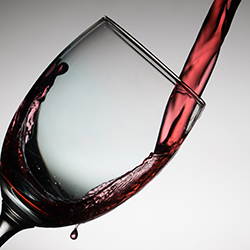Are there bubbles in wine?

This overview is based on the academic paper entitled “Behavioural Heterogeneity in Wine Investments”, authored by Adrian Fernandez-Perez, Bart Frijns, Alireza Tourani-Rad and Jean-Phillipe Weisskopf, and is published in Applied Economics
Collectibles, as an asset class have received considerable attention in recent years. On average, high net-worth individuals hold nearly 6% of their assets in collectibles. Being a significant asset class, many studies have looked at the financial aspects of collectibles and assessed the benefits of adding collectibles to a portfolio of financial assets. However, the worth of collectibles is not only determined by its financial value, but is also known to be affected by emotions, where market participants not only invest to pursue financial goals but also, for the pleasure they derive from it. This emotional aspect is shown to affect prices of collectibles, and can lead to bubble-like behaviour, as emotions can lead to irrational behaviours such as herding, and can cause prices to deviate from their fair or fundamental value over prolonged periods of time.
Among the collectible assets, there is a growing interest in wine as an investment asset, with more than 37% of high net-worth individuals around the world having invested in luxury goods such as fine wine. Consequently, in recent years, we have seen the introduction of several Wine Funds as well as the creation of several Wine Indices (e.g., the indices developed by London International Vintners Exchange www.liv-ex.com).
In our paper, we investigate whether a select portfolio of fine wines, the Liv-Ex Fine Wine Investable (the most investable fine wines from the Bordeaux region) and the fine wine indices from other regions are affected by bubble-like behaviour through state-of-the-art econometric tools.
Our research confirms that the price dynamics of fine wines are affected by the diversity of clientele with different beliefs about the future value of wine prices. Specifically, the presence of a specific clientele-type at certain time periods will determine the dynamics of the wine prices which can trigger bubble-like behaviour unrelated with changes in its fundamental value.
This behaviour is present for the most investable wines with a more varied clientele including collectors, speculative investors such as Hedge Funds or (possibly inexperienced) new customers from the Asian markets, e.g., Bordeaux or Burgundy wines. However, this is absent in less investable wines (less used by investors or exposed to investments by new clients) with more standardised clientele, possibly mainly European and American collectors and wine connoisseurs, e.g., Rhone or Italian wines
The key takeaway of our study is that assets with a mixed clientele are more prone to bubble-like behaviour and these bubbles can occur when a specific group of investors start to dominate the markets. Predicting the motives and trading activities of the different groups may help predict the occurrence of bubbles and crashes.
Publications
Our members have published articles in a number of well respected national and international journals.